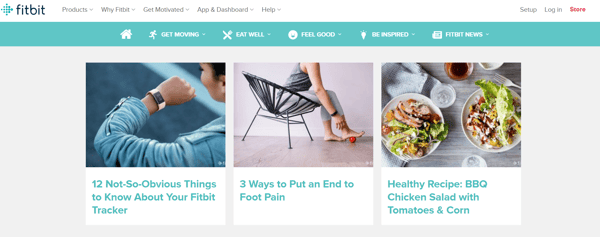Mobile apps have transformed every aspect of our lives thanks to their convenience, speed and wide-ranging features. Although building an app can be an effective strategy for your business, the market is too saturated for it to generate interest on its own. This is where content marketing for mobile apps becomes useful.
For those launching a new app, content marketing is key, helping to set you apart from competitors and get people interested in your product.
Why Content Marketing?
Content marketing has been widely adopted across a range of digital platforms and proved highly successful.
- DemandMetric noted that “Content marketing costs 62% less than outbound marketing & generates 3x as many leads”
As millions of internet users now use ad blockers to lessen the impact of traditional advertising, the potential for content marketing is huge. The creation, publishing and distribution of content can help you reach your target audience, build brand awareness and increase app downloads.
Here we have a step-by-step guide to marketing an Android or iOS app to help get the ball rolling!
1. How to Formulate Ideas Relevant to your Target Audience
Identifying the Audience
Surveying the industry and competitors will help identify which audiences you should be targeting. Once you’ve created a persona of your typical user, it’ll be easier to determine the most suitable content types and formats for maximum reach and engagement.
Your users may not all be the same, but they should share one common interest - the value of your app!
Research
Highlighting typical problems and challenges faced by your audience can provide valuable information. It’s often beneficial to "listen in" to forums where people users share opinions or ask for expert advice. Consider the following:
- What are their pain points?
- What are they interested in learning or reading about?
- How can content help solve any recurring challenges or questions?
- How will the app help the audience’s problems and needs?
Industry and community forums can provide a valuable source of information - be sure to pay attention to what your audience want!
Platforms such as BuzzSumo and Quora can also help create relevant cost-free content. BuzzSumo establishes the most popular content people are sharing on social media, while Quora is a question-and-answer website where people - including your potential customers - look for advice.
Researching topics related to your app can further assist your keyword strategy, allowing you to organically reach more potential users.
2. App Store Optimisation (ASO)

Titles, screenshots, descriptions and keywords are pivotal to the success of emerging apps among app store search engines. As a result, optimising your app listing is of great importance. If you want your app to make a huge impact, remember to do the following:
- Concentrate on long-tail keywords
- Don’t overcomplicate app descriptions and titles with too many keywords
- Provide screenshots detailing your app's main features
According to a report from VentureBeat, search engine algorithms now pay more attention to in-app content. By optimising in-app content, you’re increasing your chances of ranking higher in app stores, where users are browsing for new content to download.
Learn more about ASO by visiting our Guide to App Store Optimisation.
3. How to Incorporate Social Media to Ensure Content is Promoted to your Target Audience
Creating a strong online presence is crucial to the success of your app; social media allows you to do so. Social media marketing can be used to enhance your visibility and engage more users. Here’s a few ways you could make this possible:
Influencer Marketing
The rise of social media has expanded the circle of people we trust. This now includes our favourite industry experts, celebrities, athletes and bloggers. With influencer marketing, brands can leverage well-known figures who have influence over their target markets to promote their brands. Influencers could be the perfect way to get exposure and create a buzz on industry blogs and media channels.
Platforms such as GroupHigh, MyMediaInfo, Sellhack and LinkedIn allow you to research niche bloggers, editors and writers, and find out who works best for your audience.
Finding influencers isn’t about finding the most famous person. Instead, it's about finding someone your audience trusts.
Add a Viral Component
One of the best practices for marketing an app with content is to produce something that goes viral. Today, this kind of marketing is far more effective than traditional methods. By adding some shareable elements to your content, you can encourage people to spread the word. Going viral is obviously easier said than done, but there are some common factors behind content that achieves viral status, including:
- Emotion - Evokes happiness, anger, fear or nostalgia
- Vanity - People love to share content that makes them feel good
- Value - Providing something valuable to family/friends
- Nostalgia - Emotive and generates interest
Establish a Community
Apps enable people with similar needs, interests and values to connect. Allowing users to share their personal experiences will encourage feedback and help you to build a community. This will create a loyal group of engaged users who will promote your app across social channels.
You can also tap into existing app communities by contacting opinion leaders in specific categories. Alternatively, joining developers and entrepreneurs’ groups on platforms like LinkedIn and Google+ will increase your visibility.
4. How to Approach the Content Creation Process
The creation phase of content marketing is where you really get to see your idea start to take shape. But first, it’s important to get organised. Ensure you consider the following:
Create an Editorial Calendar
This will aid both yourself and your writers more than you ever imagined. There’s no right or wrong way to go about it, and there are numerous templates and platforms online encompassing everything from ideation to writing, legal review and publishing. Trello is particularly helpful in this respect but you can make a quick start with the help of some free Editorial Calendar Templates from Hubspot.
Content Governance
This is necessary to keep your content focused and on-track. It will outline who is taking responsibility for particular content.
As @epublishmedia says, “It’s critical for each person to know what their role is and how it fits into the larger content process. This is why defining ownership and roles is one of the most important aspects of workflow and governance”
Start by clearly defining:
- Who creates the content plan?
- Who creates the content?
- Who edits the content?
- Who approves the content?
Useful Tools
You can research what’s trending with BuiltVisible’s Content Strategy Helper and turn your keywords into ideas with Portent’s Title Maker. After you’ve conducted your research, you can get feedback with SurveyMonkey. Storify is also popular, allowing you to find out what people have been saying about various topics across multiple platforms.
Content doesn’t have to be confined to words. Screencasts, Google+ Hangouts and presentations are among the other ways in which it can be approached.
Illustrations
Relevant illustrations can get your ideas across in ways that words never could. For those without an in-house graphic design team, it’s still easy to add images to your content.
You can pull a screenshot with Skitch or dress up an existing image with Pixlr. There’s also platforms likes Canva, which can be used to create custom graphics. Morgue File, Free Images and Flickr are all very popular. There’s so many graphic platforms out there, don’t forget to take a look!
5. Where Should my Budget be Spent?

With over two billion monthly active users, Facebook is one of the most coveted advertising platforms online. Paying for Facebook advertising can be a useful way to boost engagement around your app launch.
However, in recent years, influencer marketing has become one of the most effective tactics in promoting marketing campaigns. In this instance, allocating a portion of the budget for influencers would prove beneficial. They could be used to create innovative content for your new app, building brand awareness and driving downloads.
6.Which Metrics Should be Monitored?
ROI identifies your gain after a campaign. It is imperative to calculate an estimated ROI for your idea before implementing it. All successful B2C and B2B content marketers understand the importance of measuring their campaign ROI.
Measuring the results of your content marketing campaign is pivotal. When you compare them to your campaign goals, you will then have a clear idea of how successful it has been, benefiting your app’s future. For more detail regarding ROI, visit our article on measuring the key marketing metrics for your software company.
7. Examples of Successful Content Campaigns for Apps
Bejeweled’s #shinyplace

Whether you’ve been hooked on the game or been a victim of numerous requests, the chances are you’re familiar with Bejeweled.
In May 2016, Bejeweled introduced an Instagram mobile marketing campaign through a branded YouTube video, encouraging users to find their #shinyplace. The campaign leveraged Instagram, making suggested app installs user-friendly. Bejeweled worked with high-profile Instagrammers to create ‘user-generated content’ centering on the campaign’s hashtag. As the campaign grew, users created their own content, expanding its reach without any further investment.
Fitbit’s PR Grab

Fitbit invested in a sizeable content marketing campaign, intending to attract both new and existing users. Fitbit found success by targeting a broad audience, generating buzz among industry blogs.
Fitbit recognised that their story was not solely health-conscious, but also tech and lifestyle-related. To accommodate all of these audiences, Fitbit publishes frequent blogs, typically in written format, covering everything from blog posts to tech trends.
To Conclude
A killer content marketing campaign for mobile apps will always prove beneficial. You need to remember your users’ problems and figure out how you can help them through your app. If you write about that, they’ll no doubt reward your efforts by downloading and becoming a customer!






